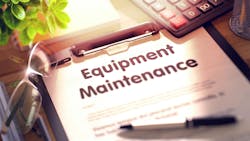Electrical Maintenance Tips for Avoiding Recalls and Rework
It isn’t traditionally stressed enough in maintenance, but in the contractor world, avoiding recalls and rework is crucial. One big difference is a contractor must redeploy service personnel to the site and the cost is obvious, while in a plant, the cost of redeploying is often invisible since maintenance people are on site anyhow. The deployment cost for a contractor is normally much higher than the deployment cost for an in-house maintenance person, but the deployment cost for an in-house maintenance person is still significant. It includes:
- Diverting that person from another assignment.
- Writing up a new work order, then later closing it out.
- Time spent preparing for the job.
- Time spent looking into the problem.
- Duplication of work, especially if a new person is assigned to the revisit.
- Time spent obtaining downtime permission.
- Time spent reperforming lockout/tagout.
- Time spent repeating job steps, undoing previous work, undoing cable ties, cleaning up all over again, etc.
- Time spent by the worker and management discussing why the job wasn’t done right the first time.
- If the problem is costly enough, time spent by a maintenance manager explaining to the production manager and plant manager why the job wasn’t done right the first time and what steps have been taken to prevent a recurrence.
But the above pales compared to these costs:
- Loss of confidence in the maintenance department. This affects budgeting, hiring, and merit raises.
- Loss of revenue. If a machine produces $250K an hour of revenue, and a recall costs an hour of machine time plus two hours of lost production incurred due to the botched first attempt, that’s a $750K loss.
- Loss of contract. A late shipment can cause a customer to seek another supplier. So if a particular machine is plagued by a couple of recalls in fairly close succession, the market for what that machine produces may go elsewhere. And when the machine is simply idled, that revenue stream is gone.
There are many other costs you could list. The point is that it’s not just in service contracting that recalls and rework must be avoided. This applies to maintenance as well. So how do you do this? These tips for properly responding to a trouble call will help:
- Thoroughly investigate the problem. Ask the operator to show you if you can’t see it occur.
- Don’t solve for “the problem.” There may be more than one. Identify all problems that have a reasonable likelihood, and test for each of them. If the machine is critical equipment or nearly so, then run a full diagnostic and perform the standard PM on it. If it’s a complex machine, consult the manufacturer’s literature and troubleshooting guide.
- Always check for Code violations, bonding errors, signs of tampering, signs of insect or rodent intrusion (nests, droppings, conductor insulation damage), evidence of overheating, and so forth.
- After the repair, give the system a methodical checkout. This is what a service contractor does, rather than say, “Call me if it happens again.” They can’t afford for it to happen again. At many plants, any repair on production equipment is followed by performing the next scheduled PM on it. This may further be followed by specific functional testing (try to reproduce the problem), depending upon the equipment in question.
- Ask the operator to test the repaired system. Then watch how the operator uses it. The failure could be due to operator error. For example, the operator starts the equipment while “work in progress” is still in the system instead of clearing it out for a proper start. This can cause extreme stress that results in premature failure and thus a recall.
- If this is a repeat of a motor replacement that occurred in the past six months, you almost certainly have motor lubrication issues. Those can be looked into offline. The two most common errors are overgreasing and using incompatible greases.
About the Author

Mark Lamendola
Mark is an expert in maintenance management, having racked up an impressive track record during his time working in the field. He also has extensive knowledge of, and practical expertise with, the National Electrical Code (NEC). Through his consulting business, he provides articles and training materials on electrical topics, specializing in making difficult subjects easy to understand and focusing on the practical aspects of electrical work.
Prior to starting his own business, Mark served as the Technical Editor on EC&M for six years, worked three years in nuclear maintenance, six years as a contract project engineer/project manager, three years as a systems engineer, and three years in plant maintenance management.
Mark earned an AAS degree from Rock Valley College, a BSEET from Columbia Pacific University, and an MBA from Lake Erie College. He’s also completed several related certifications over the years and even was formerly licensed as a Master Electrician. He is a Senior Member of the IEEE and past Chairman of the Kansas City Chapters of both the IEEE and the IEEE Computer Society. Mark also served as the program director for, a board member of, and webmaster of, the Midwest Chapter of the 7x24 Exchange. He has also held memberships with the following organizations: NETA, NFPA, International Association of Webmasters, and Institute of Certified Professional Managers.
